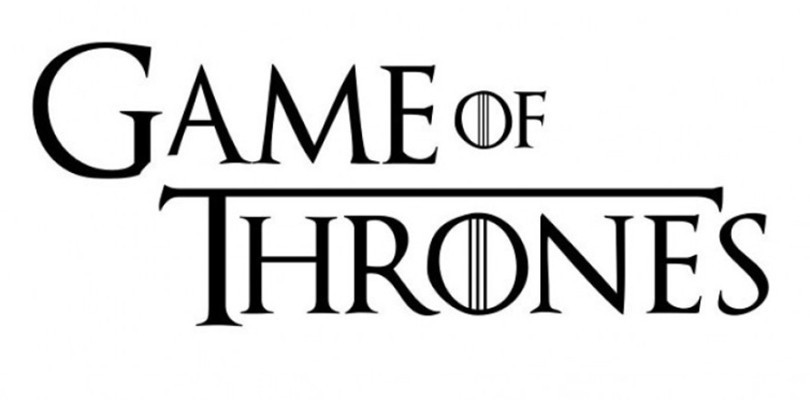B2B sales strategies and trends
Game of Thrones: The Last Word on Endings
“If you think this has a happy ending, you haven’t been paying attention.” — Ramsay Bolton
There’s a universal truth about endings. It doesn’t matter whether it’s a movie, relationship or business situation: Final words and actions assert a unique resonance, and they linger long past the rest of the story.
The ending of “Game of Thrones” still sticks with me, for good and for bad. HBO’s megahit/cultural phenomenon came to what many considered a disappointing ending almost three months ago, and some folks remain fixated on what happened (or didn’t) in the closing glimpse of the ruthless world of Westeros. The final episode (indeed, the final season) had tongues wagging and opinions flying.
Sure, there were issues. But should this realization supersede the unconditional brilliance of an entire series? Of course not.
Yet, that’s the thing about endings. They leave an impression; one that can almost nullify what came before. As sellers, the importance of a great finish cannot be overstated. And not just at the end of the deal, but at every ending throughout our sales cycle.
So, let’s explore the impact of endings via the multifaceted lens of “Game of Thrones,” and consider how we can apply these learnings to our daily pursuits as salespeople.
Episode 3: The Long Night
The night was dark and full of terrors when The Night King and his throng of White Walkers challenged the colossal horde of warriors led by Jon Snow (former king in the North) and Daenerys Targaryen (Mother of Dragons, et al.) in the pivotal clash of The Great War.
Melisandre (the dazzling Red Priestess) trotted in on her horse during the hushed moments before all-out carnage. Rumored to be centuries old, she’d committed unconscionable acts in service of The Lord of Light and was marked for death. Yet, she came to use her mysterious powers to help defeat the army of the dead.
The battle raged through the night, and The Red Priestess did what she could to prod the odds toward victory for the living. Amidst darkness, chaos and utter confusion—remarkably, the living prevailed.
Then came the episode’s stunning finish. At the sliver of dawn, Melisandre walked slowly from the castle, past piles of slaughter, towards the horizon. The shot widened to include the vastness of the North, and the dim, rising light. Suddenly, she faltered. And her waist length raven hair turned snow white. Dropping to one knee and the next, she fell, softly, onto the snow. Dying just as the score knelled its final haunting note.
This example of a brilliant finish left us breathless. And in sales, while we may not have many chances to leave our clients breathless, we can be brilliant.
Lessons for Salespeople: At Discovery’s End
Discovery is where selling begins. Here, we are set to understand the needs of the client and how (or if) our solution can bring value.
Guiding propsects through a series of leading questions is the best tactic. And plot your queries in advance, as the answers craft the story that leads to success.
Often though, we ask questions, thank folks for their answers and end the discussion. We may set the next meeting. We should. But that’s only one piece of how to effectively end the all-important phase of discovery.
At the finish of a discovery call, there are key factors to tackle. First, confirm the answers. This ensures you got them right and aids in gleaning a few more details. Next, discuss the meaning of the answers, making clear the client’s challenges and objectives. Last, share a few ways your solution will conquer the challenges and propel the objectives. If you’re tempted to reveal a litany of features to validate your point, don’t! Just state the ways your offering will help them win. And tell a story. Use narrative and color when appropriate to create a memorable impression of what can be.
Episode 6: The Iron Throne
The “Game of Thrones” series finale moved at a searing pace, hurtling past vital story elements. I felt as if I had to fill in the blanks to make sense of the eventual outcomes. Here’s how it played out.
Queen Daenerys won the Iron Throne by torching thousands of innocents and literally setting the city ablaze. Yeah, she went bonkers. During her victory speech, she spoke of freeing the downtrodden over the world, which would likely include unleashing the fiery breath of her last living dragon.
Once said to have “a good heart,” she’d morphed into a chilling reflection of her father, The Mad King. This transformation was foreshadowed, but the haste with which it occurred felt ill-advised.
Jon Snow, who loved her deeply, stabbed her in the heart to spare the world more horror. This also made sense; yet he had no chance to wrestle with his feelings. It might have helped to let her rule for a season, then we could watch him come to terms with what must have been a gut-wrenching decision.
Finally, the last Lords and Ladies of Westeros convened at Kings Landing to crown a ruler and rebuild the city. Logical. Yet we wanted to see the nobles get the news of the slaughter of Kings Landing; wanted to watch them grapple with the truth of why Jon betrayed his queen and be there when they struggled to choose a monarch.
Sadly, these story elements were not brought to life. We had to work to put the pieces together. While one episode (or season) does not negate the excellence of the series, it did leave a sour taste.
In sales, what happens when we approach the endgame? Often, folks we’ve had no influence over enter the fray. For them, key details of our story may be unfamiliar. Now what?
Lessons for Salespeople: The Rest of the Story
Let’s say your deal has made its way to procurement. Fantastic! But all manner of chaos can occur here. The price war reignites, the process has a hundred steps, but the biggest snag is an approver who knows next to nothing about your offering. She starts asking questions. Questions you thought were put to bed.
This is a tough problem to avoid, but a few suggestions may help. First, be repetitive. Remind your champion of the ‘so what,’ again and again. Choose impact words. These are the story details that lead to the ending. If the sponsors know it well, they can sell it internally. Next, build a crystal-clear executive deck, and put all contextual information in the appendix. The deck is the story, the whole story in crisp, concise, compelling narrative. Everyone who reads it should ‘get’ it! Forcing them to figure it out is a loser’s game.
Finally, if you can, position yourself to have some tie to those in power. Perhaps all you can do is send a LinkedIn connection request. Say something about the pending partnership, the big win they’ll garner, and your willingness to address any questions. Some may consider this a bold move, but I think it confirms confidence. Confidence in oneself and the value of your solution.
From discovery to close, we must chart a path that leads to a satisfying finish. Stories only make sense when the details affirm the outcome.
Last point. During the story building process, don’t meander down the road. Be brief. Be bright. Be gone.
To keep pace with the latest thinking in sales, subscribe today to the LinkedIn Sales Blog.
Topics: B2B sales strategies and trends
Related articles






